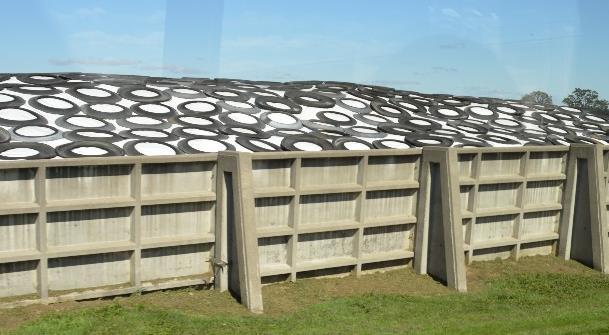Are Oxygen Barrier Films for Covering Silage Worth Their Cost?
Are Oxygen Barrier Films for Covering Silage Worth Their Cost?

Oxygen barrier films can be applied as either a separate layer of plastic with a covering of “silage plastic” or incorporated into the “silage plastic” covering itself. Research has shown that the proper use of oxygen barrier plastic to cover silage decreases oxygen infiltration into the upper layers of silage reducing dry matter losses. Most farmers notice the reduction of spoiled silage that needs to be discarded from the top and sides of piles, bunkers, and trenches when using oxygen barrier plastic. Researchers have estimated that silage losses within the top 2.5 feet of silage were reduced by half when an oxygen barrier film was used. Even when evaluating dry matter losses within the entire silo, dry matter losses were reduced 8% over those using just a standard plastic covering. This reduction in dry matter losses reflect results from 41 research trials of which only 2 studies showed a negative result. Additional studies have shown that the use of oxygen barrier film to line the sides of bunker/trench silos reduces dry matter losses close to the sidewalls.
To make the best use of these plastic coverings, the plastic (oxygen-barrier plus plastic layer or oxygen barrier film incorporated into the plastic) must remain in contact with the silage surface throughout the storage period. To accomplish this task, tire walls or sandbags that touch must be placed over the entire top surface of the covered silo. Wind or varmints (i.e. raccoons) cannot disturb the plastic layer and the weight holding the plastic in place. If this does happen, repairs should be made immediately. Plastic used to cover silage should be UV resistant.
Oxygen barrier films do increase the cost associated with covering silage over just a single non-oxygen barrier plastic. But, the real question is “do they pay for themselves”. If we decrease the amount of silage lost by 8% in a silo holding 200 tons of corn silage (approximately 20 ft wide x 50 ft long x 8 ft tall), we have an additional 16 tons of silage to feed. At today’s feed prices (high corn, SBM, and byproduct costs), corn silage has a nutritive value in excess of $100/ton. Thus, that additional feed is worth $1600. Even if we value the corn silage at $50/ton, that feed is still worth an additional $800. These feed savings are over and above those associated with using a traditional plastic silage cover. With these feed savings, use of oxygen barrier films will pay dividends.
- Author: Donna M. Amaral-Phillips
- Printable PDF version
